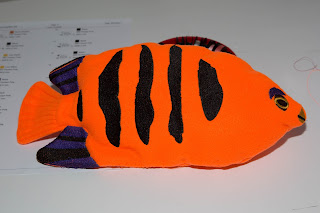The basis of my winter wardrobe is going to be jeans and brightly patterned collared shirts. I have some shirts, but unfortunately, most of them don't quite fit any more. I need to make some new shirts with some modifications so they fit me better.
I just happen to have a nice collection of cotton prints in my stash, all in appropriate lengths for making shirts. I know all you quilters love fat quarters, but I buy my cotton prints in 3 yard lengths, which gives me a lot of flexibility for what to to with them.
I bought nearly all of this fabric when I was traveling, because there's limited resources in my hometown. The lovely Hawaiian prints are from Fabric Mart in Honolulu. They have various locations on Oahu, all with lovely fabrics. The dragon print are from the Calico Cat in the Kaimuki district of Honolulu. Others are from Kaimuki Dry Goods, also in Honolulu, High Fashion Fabrics in Houston, and SR Harris in Minneapolis.
So... which of these lovely fabrics to use first?? How about the one with the chameleons from SR Harris?
The pattern I'm using is McCall's 8053, which has been out of print for quite a while, however, McCall's 7629 is similar.
One of the problems with the older editions of this shirt is that the sleeves are not quite big enough around. A second issue is that the shirt is too small over my hips. To fix these problems, I added 1/2: on each side of the sleeve, tapering to nothing at the cuff. I also added 1/2" to the front and back, expanding to 2" at the hips.The collar on this shirt calls for the inside of the collar to be hand sewn to the shirt. That's not fun. Instead, after sewing on the collar, I pressed a crease about 1/2" from the edge of the inner collar. After pinning, the collar is sewn on the outside, for a neat appearance.
This one is a lively Hawaiian print featuring plumaria and hibiscus. The fabric is from Fabric Mart.
I just couldn't pass up this fabric with jellyfish from Kaimuki Dry Goods.
Come back next Saturday for a look at finishing long sleeves using the continuous lap, a traditional technique for traditional blouses such as these.































